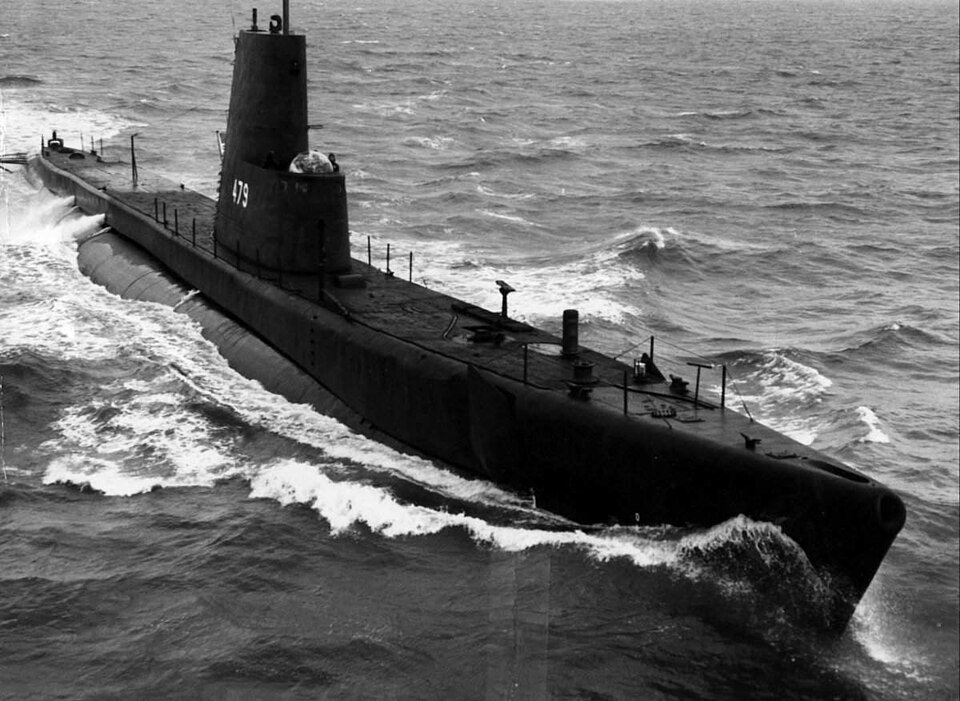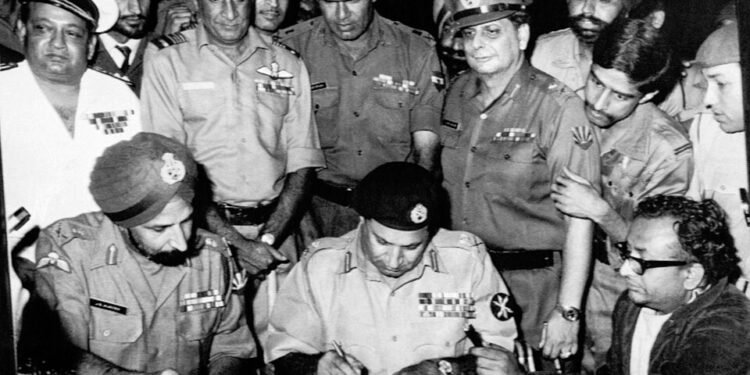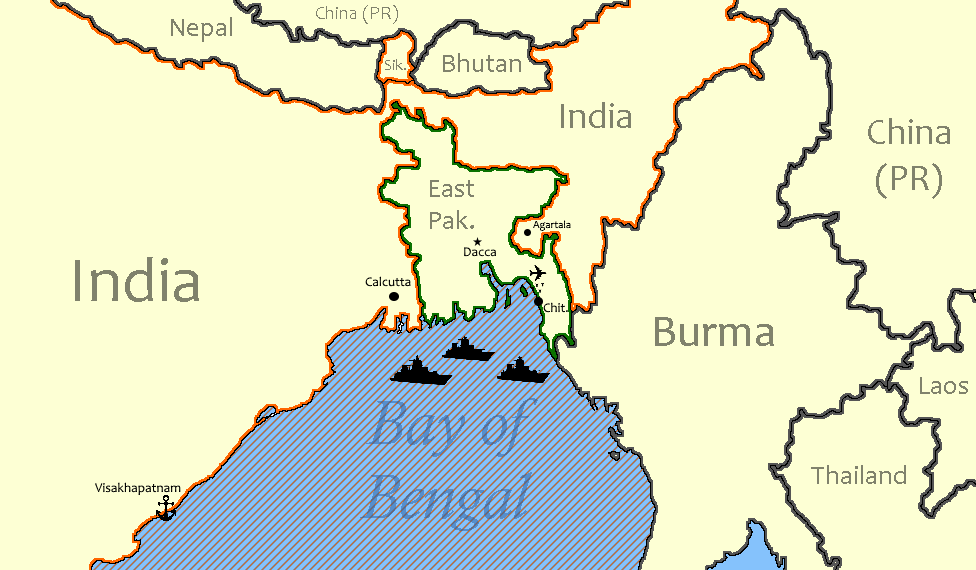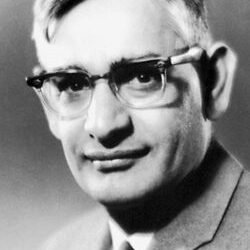Introduction
The Indo-Pakistani War of 1971, fought from December 3 to 16, erupted as India’s decisive intervention in the Bangladesh Liberation War, culminating in Pakistan’s Eastern Command surrender of 93,000 troops—the largest since World War II—and the birth of Bangladesh from East Pakistan. Triggered by Pakistan’s Operation Searchlight (March 25, 1971) genocide against Bengali nationalists, which killed 300,000-3 million civilians and displaced 10 million refugees into India, the conflict saw Mukti Bahini guerrillas fight alongside Indian forces under Lt. Gen. Jagjit Singh Aurora against Lt. Gen. A.A.K. Niazi’s outnumbered command. India achieved air supremacy in 11 days, rapid eastern advances, and western defensive successes, forcing unconditional surrender at Dhaka’s Ramna Race Course on December 16; the Simla Agreement (July 1972) formalized the Line of Control (LoC) in Kashmir. Casualties: India ~3,000-3,500 killed, 12,000 wounded; Pakistan ~8,000-9,000 killed, 25,000 wounded, plus massive equipment losses (45 tanks vs. India’s 6 in east).

Prelude: Bangladesh Liberation War
East Pakistan’s grievances—economic exploitation (70% exports from 55% population, yet 30% budget), cultural linguistic suppression (1952 Language Movement), 1970 cyclone mismanagement (500,000 dead, inadequate aid)—fueled Awami League’s Sheikh Mujibur Rahman’s six-point autonomy demand, winning 167/169 seats in Pakistan National Assembly. Yahya Khan and Zulfikar Ali Bhutto refused power transfer; March 7, Mujib’s rally speech sparked resistance; March 25, Operation Searchlight launched with Pakistan Army massacres at Dhaka University (professors, students slaughtered), Jinjira Bridge, Hindu neighborhoods—Razakar militias aided atrocities.
Mukti Bahini formed April 1971 (30,000-250,000 fighters, trained in India); guerrilla warfare tied down 90,000 Pakistani troops amid naval blockade. India sheltered 10 million refugees, straining economy (₹80 crore/day); covert ops via RAW supplied arms, escalating tensions. November 21, Indian-Pakistani clashes along borders; US/Pakistan tilted toward China, prompting Soviet Treaty of Peace (August 9).
Outbreak and Western Front
Pakistan preempted December 3 with Operation Chengiz Khan: PAF struck 11 Indian airfields (Srinagar, Pathankot, etc.), destroying 35-45 aircraft but failing total knockout due to hardened shelters, Hunters. India retaliated December 4 with full air superiority (4,500 sorties vs. PAF 2,800), downing 73 Pakistani planes (45 confirmed).
Western theater (Punjab, Rajasthan, Jammu): Defensive for India. Battle of Longewala (December 4-7, Rajasthan): 120 Pakistani tanks (US Pattons) vs. Major Kuldip Singh Chandpuri’s 23 Punjabis, 4 tanks—Indian artillery/Hunters destroyed 37 tanks, repelled assault; PVC awarded. Battle of Basantar (December 4-16, Punjab): Indian 33rd Cavalry (Maj. Gen. G.S. Sandhu) crushed Pakistani 16th Infantry/33rd Cavalry counterattack, destroying 46 tanks; Brig. K.S. Brar led; second-largest tank battle post-WWII. J&K saw limited ops: Tangail Airdrop (December 11) bypassed defenses. Navy: INS Vikrant carrier struck Chittagong, Karachi (December 4-5, PNS Ghazi sub sunk December 3).
Eastern Front: Lightning Campaign
India’s Eastern Command (Aurora, IV Corps Sagat Singh, 101 Commando) invaded December 4 with 3 corps (200,000 troops) vs. Pakistan’s 90,000. Mukti Bahini (50,000+) sabotaged bridges, railways. Key advances:
Sylhet-Hillii Front: Meghna Heli Bridge (December 9-10, Brig. H.S. Kler)—first combat heli-lift, bypassed defenses.
Tangail Airdrop (December 11): 2 Para (Lt. Col. KS Pannu) seized 65 bridges, cut retreat; 4th Guards/101 Commando encircled Dhaka.
Battle of Garibpur (December 20): 14 Cav (PT-76 tanks) destroyed 40 Pakistani M-24s; Lance Naik Albert Ekka PVC.

Indian navy had blockaded Pakistan’s trade and supply lines in Bay of Bengal in Eastern theatre; Airforce bombed and raided several towns and some cities in East Pakistan | Source: Wikipedia Hillii (December 10-11): 20 Mountain Division overcame minefields, captured vital town despite heavy casualties.
By December 14, Niazi radioed surrender plea; psychological ops (loudspeakers, leaflets) demoralized. Air: IAF MiG-21s/Hunters dominated, destroying PAF bases.
Surrender and Instrument
December 16, 4:30 PM, Ramna Race Course: Niazi (Pakistan Eastern Command), Mohammad Shariff (Navy), Patrick Callaghan (Air) signed Instrument of Surrender to Aurora, with Mukti Bahini rep A.K. Khandker; witnesses: Sagat Singh, J.F.R. Jacob (Chief of Staff, orchestrated psyops). Text assured Geneva Convention protections, surrender of all land/air/naval/para-military forces; 93,000 POWs (79,676 troops, 10,324-12,500 civilians/Razakars) marched to camps—treated humanely, repatriated 1974 post-Simla.
Bangladesh proclaimed; Mujib released from Pakistani jail (December 16), returned January 10, 1972.
Simla Agreement and Aftermath
Indira Gandhi-Yahya/Bhutto summit (July 2, 1972, Simla): Bilateral resolution, LoC acceptance (no Tashkent reference), POW repatriation (excluding 195 POWs tried Bangladesh for war crimes), no-force policy; Kashmir bilateralized, freezing territorial status. Pakistan recognized Bangladesh February 1974.
India: Heroes honored (32 PVCs total wars, 4 in 1971); military prestige soared. Bangladesh: Victory Day (December 16). Pakistan: Army purge, Bhutto executed 1979; 1973 Constitution. Global: US 7th Fleet deterred (Task Force 74), Soviet vetoes UN resolutions.
Casualties tally: East Pakistan 26,000 Pakistani dead, 30,000 Mukti/Indian; civilian genocide 300,000-3M; equipment: Pakistan lost 90 aircraft, 225 tanks, 80 ships vs. India 35 aircraft, 94 tanks.

Legacy
War redefined South Asia: Bangladesh’s independence ended two-nation theory, boosted India’s regional dominance, inspired Siachen/Kargil. Lessons: Mukti integration, rapid maneuver, air-naval synergy; nuclearization (India 1974 Smiling Buddha). At 54 years, echoes in cross-border terror, but Simla LoC endures amid peace initiatives.





